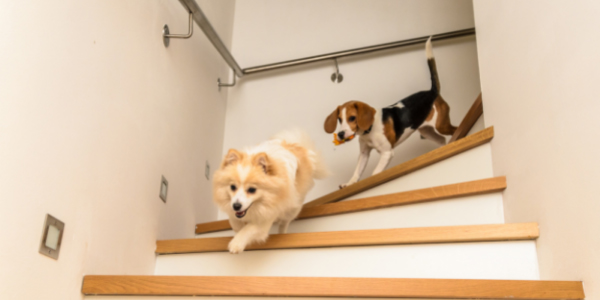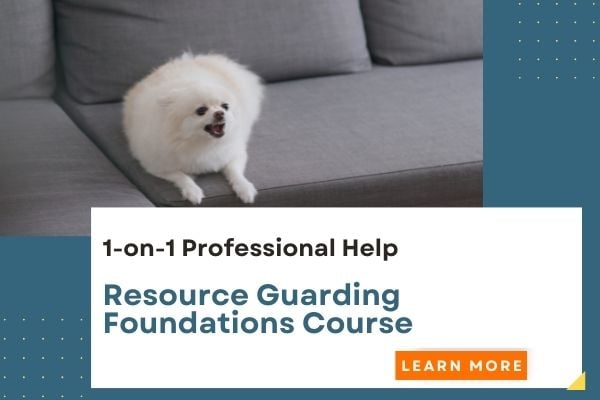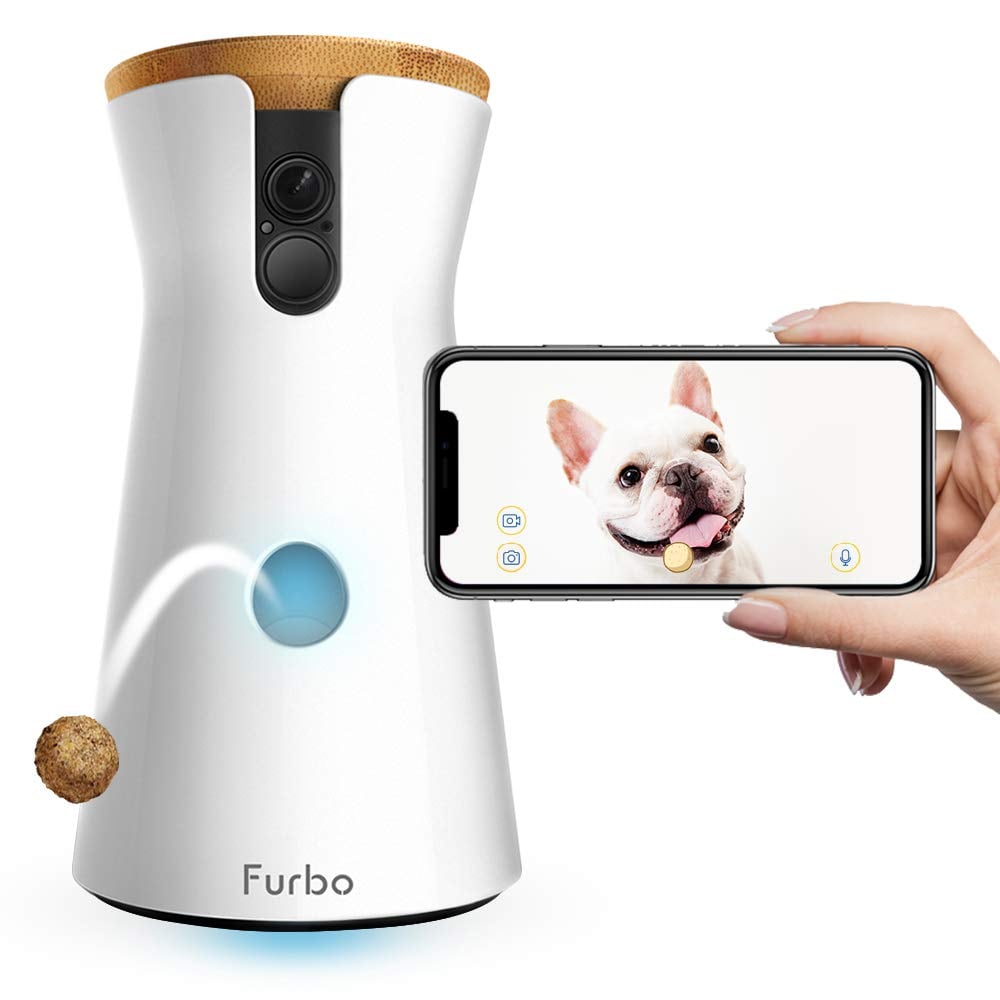 Dogs who live in the same home can benefit from the company of their housemate while the humans are away.
Dogs who live in the same home can benefit from the company of their housemate while the humans are away.
However, it can be nerve-racking to leave two dogs (or more) alone together for the first time.
Unless you plan on keeping them separate whenever you aren’t around to supervise, it’s important to get them used to spending time together alone!
Consider how you can set them up for success by providing the appropriate room set-up, addressing any individual problem behaviors, and slowly introducing periods of alone time together.
Before You Leave Your Dogs Alone Together
Your dogs must be fully comfortable around each other while humans are present before being left alone together without supervision. If you notice that your older dog doesn’t always appreciate your puppy’s crazy energy, don’t assume that your puppy will be able to stay away from them when you’re not there to intervene. Keep your puppy in their designated puppy zone while you’re gone to make sure your older dog gets a break.
Do either of your dogs resource guard particular items such as food, toys, or resting places? Resource guarding is a natural instinct for all dogs, but some dogs cannot cope with the thought of sharing certain things with others, and this can lead to fights. If you have a dog who resource guards, it’s best to not leave them alone with another dog until that issue has been addressed with the help of a certified dog trainer using force-free and positive reinforcement methods.
To learn more about treating your dog's resource guarding (also called possessive aggression), check out "Resource Guarding in Dogs: What to Do (and What NOT to Do)."
Set Up For Success
When first leaving your pups alone together, make sure the area they’ll be hanging out in is safe and encourages good behavior.
- Provide lots of beds or rest areas. Make sure there is a variety of places your dogs can choose to lie down and rest if they need a break from the other dog. By providing lots of choices, you’re also preventing any guarding of space from developing in either of your dogs.
- Don’t leave out any chews or toys that could provoke resource guarding. If you do leave toys out, make sure they are safe for your dogs and have multiple of the same type of toy.
- Don’t leave out dog food or other high-value chews while your dogs are alone. This can trigger a fight if one dog decides they want the other dog’s chew, and you won’t be there to break it up.
- Your dogs should be naked! If you have dogs that like to play together, they should not wear collars or harnesses when left alone. Dogs can be strangled by their own collar if it gets caught on another dog’s teeth or dangling ID tags during play. Even if your pups don’t like to wrestle, collars can get caught on other household items, so it’s best to keep your dog naked or on a quick-release collar when you’re not around.
- Do your dogs like to bark at the mailman or other passers-by? Block access to the front door or windows so they don’t practice this behavior together while you’re away. Dogs can learn bad behaviors from each other, and you don’t want your new pup to learn that it’s fun to bark all day. The frenzy of barking at something outside can also trigger what is called redirection. All of that energy your dog builds up by barking at a possible threat needs to go somewhere, and many times they’ll turn and go for the closest thing – in this case, the other dog. Learn more about how to stop barking.

Start Small
Once you’ve made sure the area where your dogs will be hanging out together is set up properly, you can start testing how your dogs do together when left alone. Start with short intervals of time alone, even just a few minutes while you take the trash out, or go for a quick walk around the block. It’s a great idea to set up a monitoring system like this one from Wyze that you can check in on while you’re out and about to see what your dogs are up to.
You can gradually increase the time your pups are left alone if they do not exhibit bad behavior or signs of stress. If you’re noticing an increase in destructive chewing, barking, resource guarding, or other problem behaviors, it’s best to go back to keeping your dogs separated while you’re gone so you can address these issues with a certified professional dog trainer. You can keep them safely separated using a crate, ex-pen areas, or gating off separate rooms.
It’s wonderful to trust your dogs while they’re alone together, and the company they provide for each other is an added bonus!





